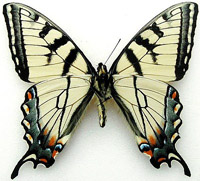Lepidoptera Survey, International

The Taxonomic Report of the International Lepidoptera Survey
Date of this Version
2-10-2020
Document Type
Article
Citation
Taxonomic Report of the International Lepidoptera Survey (February 10, 2020) 8(4): 1-11
Also available at https://lepsurvey.carolinanature.com/ttr/ttr-8-4.pdf
Also available at the Internet Archive, the Biodiversity Library, at Zobodat
ZooBank registration: http://zoobank.org/References/6A0BCEEB-F6E2-4FC6-BFB8-BD116194AFA0
Abstract
The present paper defines the original type locality of Hemileuca maia (Drury, 1773) as Edgewood, New York, in the Long Island Pine Barrens. It has been locally known as the “Coastal Pine Barrens Buckmoth” and its range may be confined entirely to Long Island, though populations throughout southeastern coastal New England and offshore islands may be considered the same nominotypical taxon. In analyzing historical events, there are questions regarding the geographic location, and source and eventual disposition of the specimen illustrated by artist Moses Harris in Drury (1773). While there is ample evidence that Drury’s specimen of maia came from a Mr. Thomas James of Brooklyn, New York, it is not clear whether the illustrated specimen was actually obtained by, and in the possession of, Dr. John Fothergill at the time the specimen was illustrated. Drury’s illustrated specimen perhaps found its way to various collections and is believed to now be lost or unidentifiable. A neotype is designated from the Edgewood Scrub Oak Plains, near present day Brentwood, New York, to agree with a possible collecting location used by Thomas James.


Comments
Copyright 2020, International Lepidoptera Survey. Open access material
License: Creative Commons Attribution-ShareAlike-NonCommercial 4.0 International (CC BY-SA-NC 4.0 International)